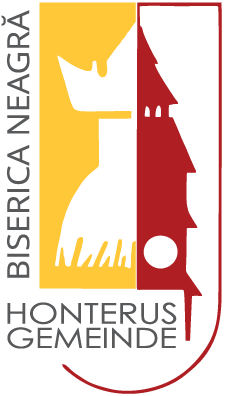Cultural heritage conservation and restoration programs
CANDLESTICKS FROM THE PARISH’S PROPERTY
THE HOUSE IN MAIN SQUARE (PIAȚA SFATULUI), NO. 17 (2006–2010)
SELF-PORTRAIT OF HANS EDER (2007)
SAINT MARTIN’S CHURCH ON THE LOWER HILL (2007–2013)
CHALICE FROM A SETTLEMENT NEAR BRAȘOV (2010)/strong>
TWO FRAGMENTS OF AN OTTOMAN RUG (2011)
THE HOUSE IN MAIN SQUARE (PIAȚA SFATULUI), NO. 16 (partially restored in 2012)
THE ORGAN FROM THE VILLAGE HAMBA (2013)
THE ROOF FRAMEWORK OF THE BLACK CHURCH (2015–)RE
HOUSE IN THE JOHANNES HONTERUS COURTYARD, NO. 9 (2017–2018)
BUTTRESS STATUES – BLACK CHURCH (2018–)
THE HOUSE IN THE JOHANNES HONTERUS COURTYARD, NO. 8 (2019–2020)
Candlesticks from the parish’s property
Dr Ágnes Ziegler completed her examination of the collection of historical candlesticks at the beginning of 2024. The historical collection includes objects from the 14th to 19th centuries. The processing of the more than 30 objects included their renewed inventory based on a forward-looking catalogue of criteria, the cleaning of the candlesticks from wax residues and surface dirt as well as the improvement of the storage conditions. The research on the candlesticks, which began in parallel, ranges from the detailed recording of technical and formal aspects to questions of acquisition and the practical and liturgical functions of the candelabra.

THE HOUSE IN MAIN SQUARE (PIAȚA SFATULUI), NO. 17 (2006–2010)
The building, which used to house living spaces and various offices was restored in order to act as a central headquarter of the parish. Its restoration, which successfully combined its original substance with modern elements, was directed by architect Johannes Bertleff and was awarded at the 2010 Bucharest Architecture Biennial. The restoration campaign implied an investment of 300.000 Euros and was financed from our own funds.
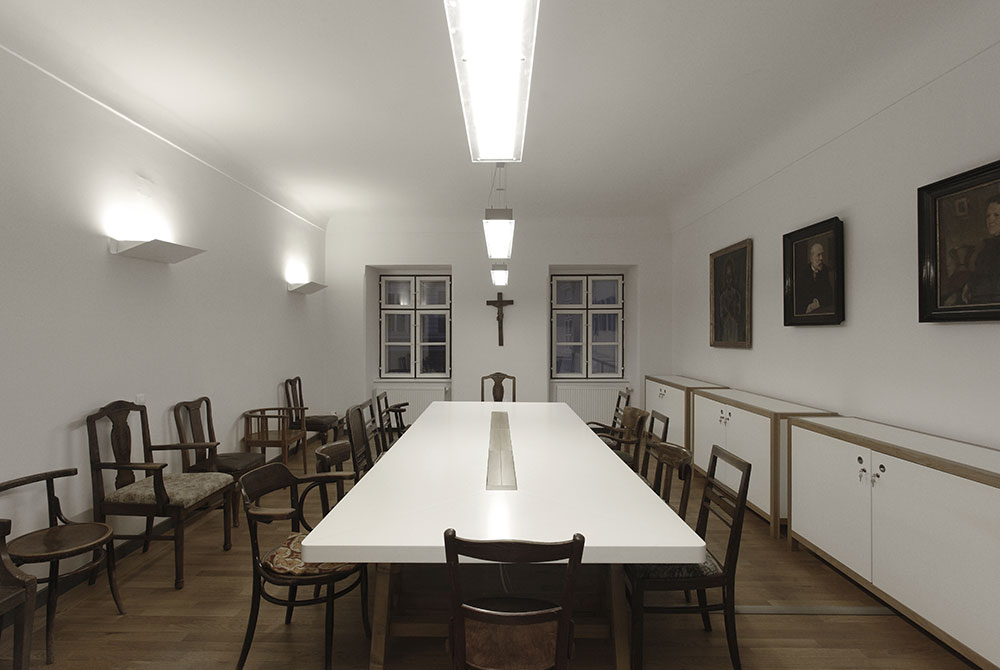
The conference room of the parish administration situated in the house in Piața Sfatului, no. 17. Photo: Andrei Mărgulescu
SELF-PORTRAIT OF HANS EDER (2007)
For several decades, the painting The Terrified, created by Brașov-born painter Hans Eder, was missing. The title conferred to the painting is misleading; in fact, the painter portrayed himself at work. When the small-sized painting eventually reappeared, it was in a highly deteriorated condition, with a destabilized canvas, cracks and missing layers of paint. The expert Zsuzsanna Mara from Miercurea Ciuc restored it out of our own funds.

Hans Eder: Self-portrait, 1913. The Collections of the Evangelic-Lutheran Parish A.C. of Brașov. Photo: Ágnes Ziegler
SAINT MARTIN’S CHURCH ON THE LOWER HILL (2007–2013)
The small, partially medieval church, situated on the Lower Hill of Brașov, was restored in accordance to the very best practices, as the works were preceded by ample examinations of the building including archeological research, facade analysis, age tests of the painted furniture and many more.
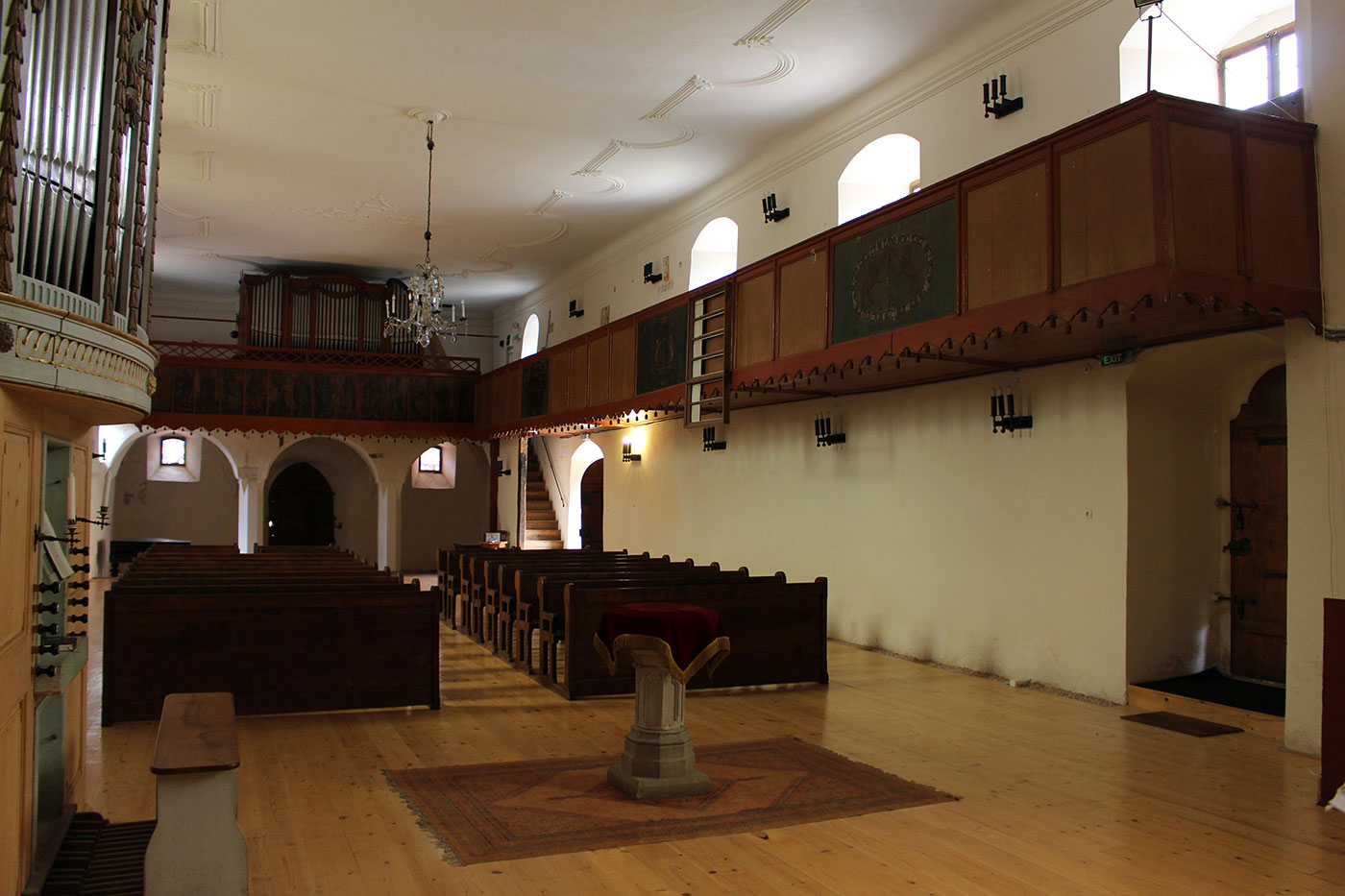
The Evangelic-Lutheran Saint Martin’s Church after restoration. Foto: Ágnes Ziegler, 2019
THE ORGAN FROM BUNEȘTI (2010)
The organ, initially placed above the altar in the protestant church in the village of Bunești, was in danger of collapsing. Thus, the decision was made to save the instrument by transferring it to Brașov. It was restored in the organ construction and carpentry workshop in Hărman, with the financial support of the Horizon foundation in Germany. Subsequently it found its place at Saint Martin’s Church in Brașov.
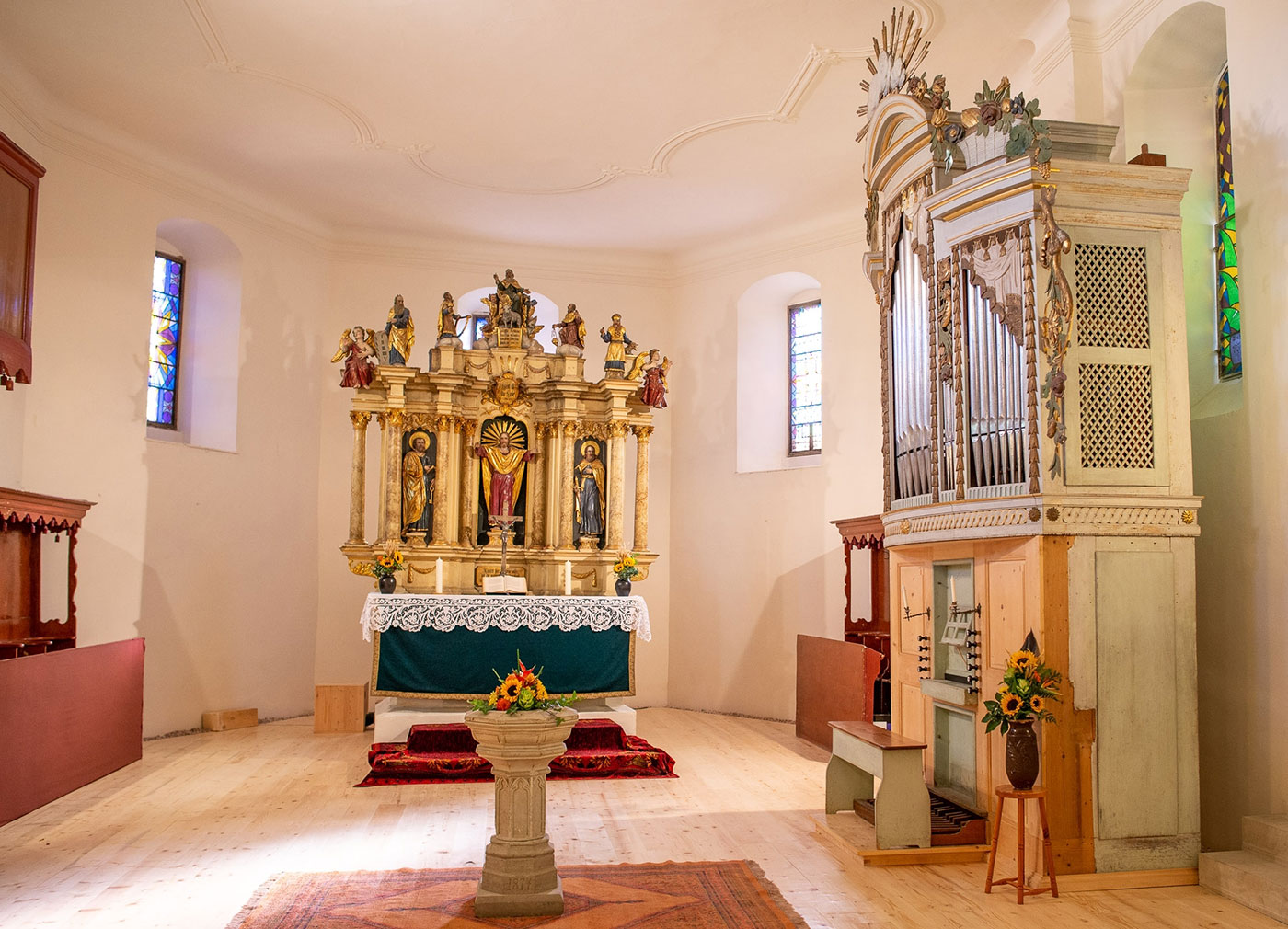
The organ from Bunești brought to Saint Martin’s Church after restoration. Photo: Steffen Schlandt, 2013
CHALICE FROM A RURAL COMMUNITY NEAR BRAȘOV (2010)
This gothic chalice became unusable after it had been dismantled, and its owners were unable to fully reconstruct it. Interventions with improper materials only worsened the valuable artifact’s state. The chalice was restored in the metal and silverware restoration workshops of the Hungarian National Museum (Magyar Nemzeti Múzeum) in Budapest, free of charge, by the Museum’s generosity.
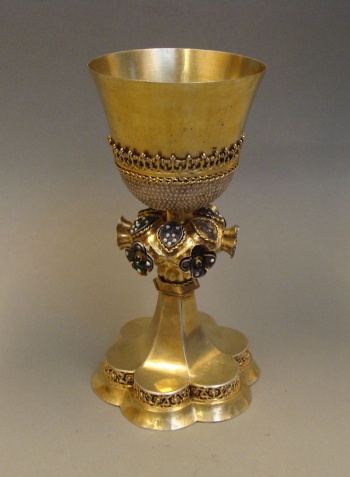
15th-century Gothic chalice, after restoration. Photo: Gábor Szőke, 2010
TWO FRAGMENTS OF AN OTTOMAN RUG (2011)
For many decades, a beautiful Ottoman rug was preserved in two separate fragments. After it had been lent to a rug exhibition at the Museum of Islamic Art in Berlin, the Museum agreed to execute basic restoration measures. The method used to restore the two pieces consisted in fixing the object onto appropriate supporting material, which led to the original material’s necessary stabilization and thus to the prevention of further deterioration, keeping its previous harms and flaws nevertheless visible.

A double-niche Transylvanian rug, after restoration. The Collections of the Evangelic-Lutheran Parish A.C. of Brașov. Photo: Árpád Udvardi
THE ORGAN FROM RUPEA (2012)
An especially valuable organ, considered the oldest in nowadays Transylvania, the organ from the small town of Rupea was removed from the wooden gallery in its original church, which had remained unused for many years. In 2012, a fundraising campaign was launched by the ForumARTE foundation, inviting the public to donate to the instrument’s restoration fund. Christian von Albrichsfeld promised to double the amount which would be donated by the citizens of Brașov. The EvangelicLutheran Parishes A.C. of Rupea and Brașov had substantial participation in the call for donations and, eventually, the organ could be restored and set up inside the Black Church. The restoration works were executed by the organ construction and carpentry workshop in Hărman. The project returned to our heritage an exceptional instrument, whose value is recognized even abroad.
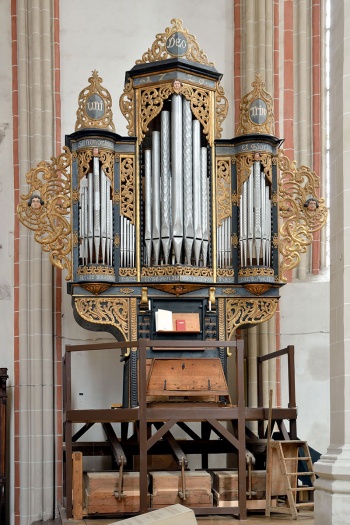
The organ from the Evangelic-Lutheran Parish A.C. of Rupea – built in the 17th and 18th century. Foto: Árpád Udvardi
THE HOUSE IN MAIN SQUARE (PIAȚA SFATULUI), NO. 16 (partially restored in 2012)
One of the most valuable buildings in Brașov, situated in the passage between Piața Sfatului and the courtyard of the Black Church, is part of a project so vast, that it could not be finished up to this very day. In 2012, the ground floor of the house, whose walls are decorated with impressive mural paintings and preserve numerous historical stone fragments, was renovated out of our own funds. At present, it houses a oasis of literature: a Humanitas bookstore.

Fragments from a mural painting inside the Humanitas bookstore in the patrician house in the main square (Piața Sfatului), no. 6, after the building’s restoration. Photo: Andrei Mărgulescu, 2012
THE ORGAN FROM THE VILLAGE HAMBA (2013)
The organ once belonging to the Evangelic-Lutheran Parish A.C. in the small village of Hamba in Sibiu county, was removed from the church abandoned by its parishioners in 2006, after the instrument could no longer be used for music. The organ had been vandalized and half of its metal pipes had been stolen. Its restoration in 2013 was performed by the organ construction and carpentry workshop in Hărman, sponsored by the significant donation of Mr. Ludovic Ionescu and out of our own funds. The instrument was equipped with additional pedalboards, and in 2020, a VOX HUMANA board was also installed. Now, the organ is in perfect condition, being an important representative of the Transylvanian art of organ construction.
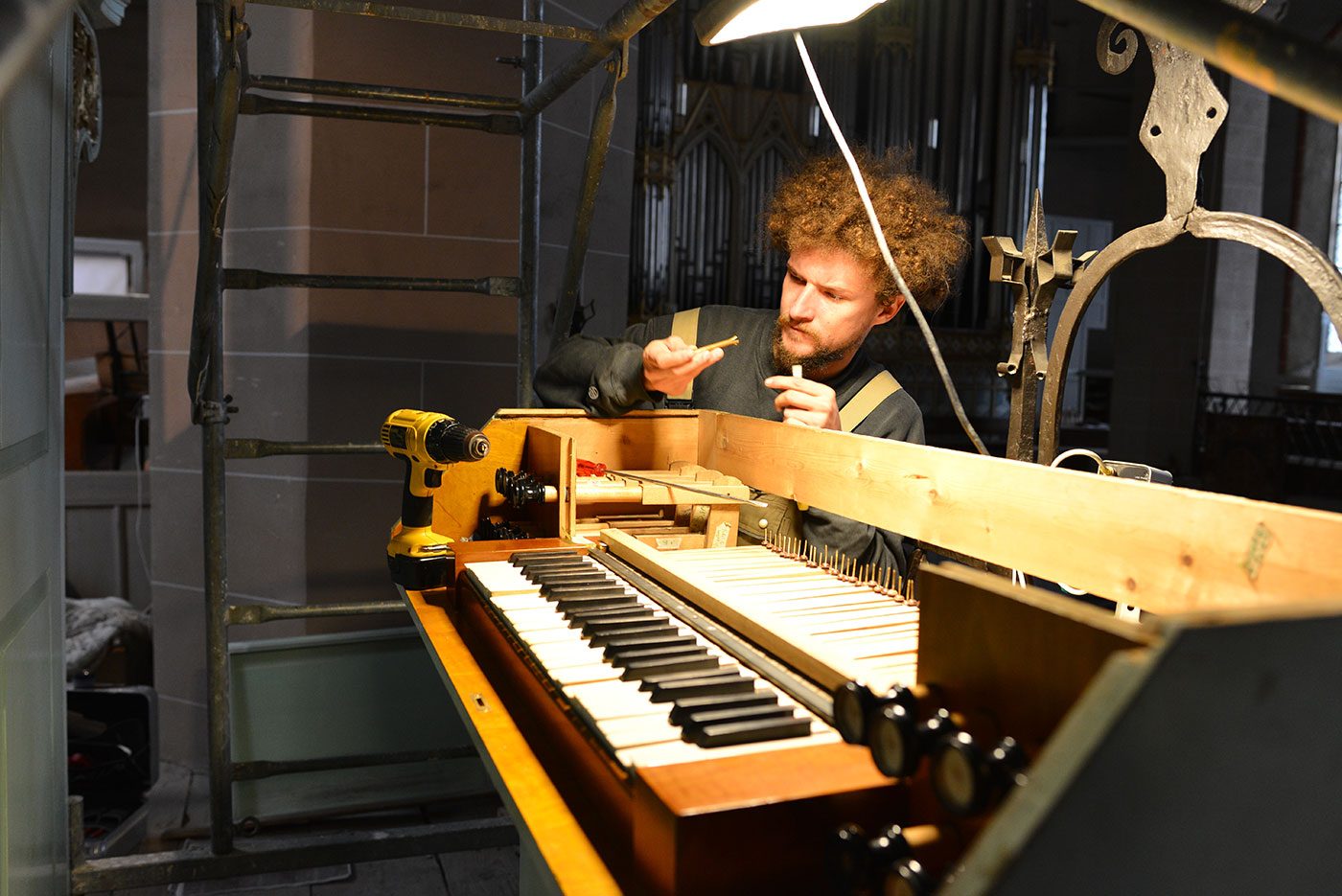
Setting up the organ from Hamba on the western gallery of the Black Church. Photo: Steffen Schlandt, 2013
THE ROOF FRAMEWORK OF THE BLACK CHURCH (2015–)
The wooden material of the 17th-century framework suffered from water infiltrations. Its coating was last adjusted in 1970, and many roof tiles broke ever since. Thus, an all encompassing intervention on the framework and roof became necessary. The basic requirement was not to restore any of the objects, but rather to perform minimally invasive conservation works, which would still bring the necessary adjustments to the functionality of the framework. Consequently, the wooden elements which had to be replaced were substituted by using traditional techniques, the roof tiles were manually cast by special order. The tinsmiths used a traditional material (copper), and their methods and solutions were slightly adjusted in terms of functionality. The interventions surrounding the pinnacles and turrets were the most difficult, because they implied the effort of the whole team of carpenters, tinsmiths and stonemasons. The entire operation, not yet finished, is planned to last around 8 years and implies an investment of 800.000 Euro from our own funds.
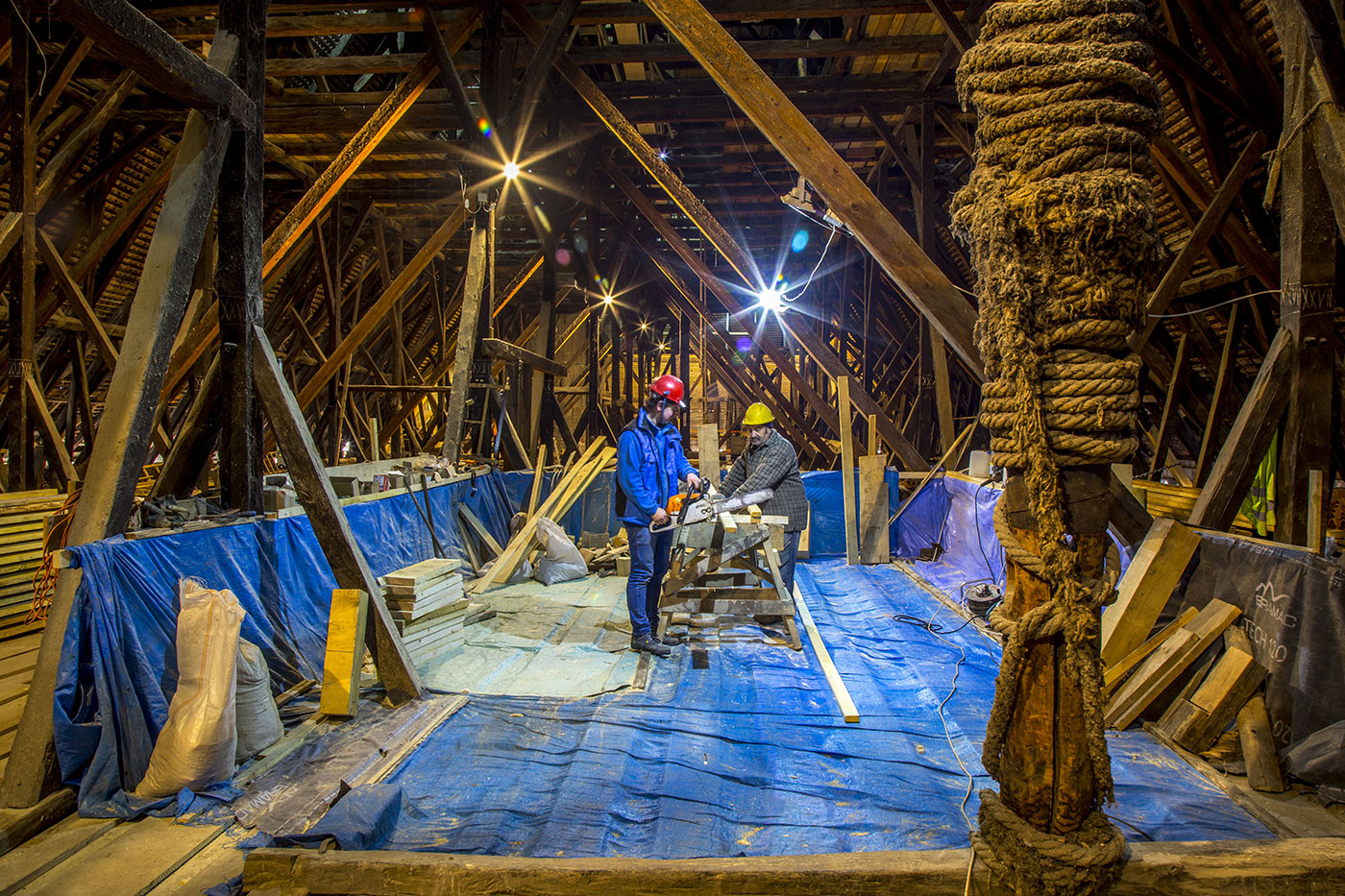
Carpentry works on the Black Church’s roof framework. Photo: Radu Pescaru, 2017
HOUSE IN THE JOHANNES HONTERUS COURTYARD, NO. 9 (2017–2018)
Our contemporary intervention on the modest house lying opposite the main entrance of the Black Church was conceived to preserve its fragile beauty and as much as possible of its expressiveness, granted by its visible original materials and its simple details. The absence of any decorations is compensated by the beauty of the bare materials, such as the wooden roof beams and pockets. In order to maintain the original expressiveness of the attic, where the coating of the roof tiles was always visible from the inside, we opted for the construction of a new framework over the old one, thus doubling the total surface of tiles (one on the interior and one on the exterior).
All the new elements introduced – such as the metal staircase and the sheet-iron bulkheads – expose their own specific materiality and are distinct from the historical substance. The intervention was intended to be minimally invasive as much as possible, maintaining the air of intimacy. The only new element of significant dimensions – the sales counter – signals the transformation of the house into a public space. It spans across two rooms and is the only piece of furniture that has been enriched with decorative elements. The investment was financed from our own funds and is valued up to 138.000 Euro.

The tables and chairs of the café were placed underneath the roof framework with its double layer of roof tiles. Photo: Ciprian Gruia
BUTTRESS STATUES – BLACK CHURCH (2018–)
The copies of the gothic statues placed on the buttresses that support the choir of the Black Church, which were carved in the 1980s, rapidly began to deteriorate at the beginning of the 20th century. Water seepages and successive cycles of freezing and
unfreezing during the cold season led to the appearance of cracks in the stone. Due to the mechanical pressure of birds landing on the statues, pieces of them started to fall off. The restoration campaign began in 2018, in collaboration with Călin Bârzu, an expert in stone restoration. It is financed from our own funds, with the support of the Brașov District Council.
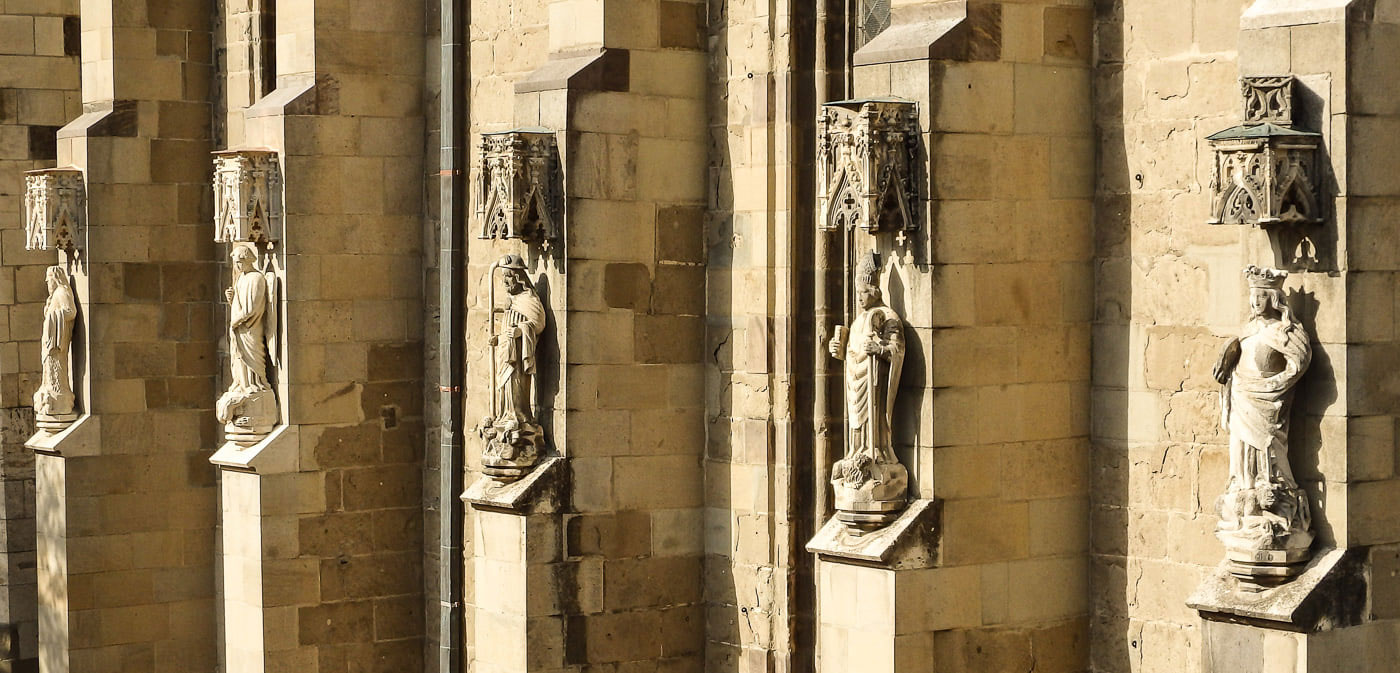
Replicas of the statues of saints, installed on the buttresses of the Black Church’s sanctuary, already partially restored. Photo: Anca Milea, 2020
THE HOUSE IN THE JOHANNES HONTERUS COURTYARD, NO. 8 (2019–
2020)
The former auditorium of the Evangelic-Lutheran grammar school and probably the place where Johannes Honterus’ library was hosted, was used for housing for a long time. At present, it shelters our Gift Studio. Its careful restoration revealed, amongst others, a beamed ceiling spanning over almost a hundred square meters, which surprisingly dates from the mid-16th century. The investment covered from the parish’s own funds, was worth 280.000 Euro.

View into two of the five rooms of the Gift Studio, situated in the Johannes Honterus Courtyard no. 8. Photo: Béla Benedek

The beamed ceiling on the first floor of the building situated in the Johannes Honterus Courtyard, no. 8., dates from the 16th century and was decorated with paintings in the 18th century. Photo: Ágnes Ziegler, 2019





